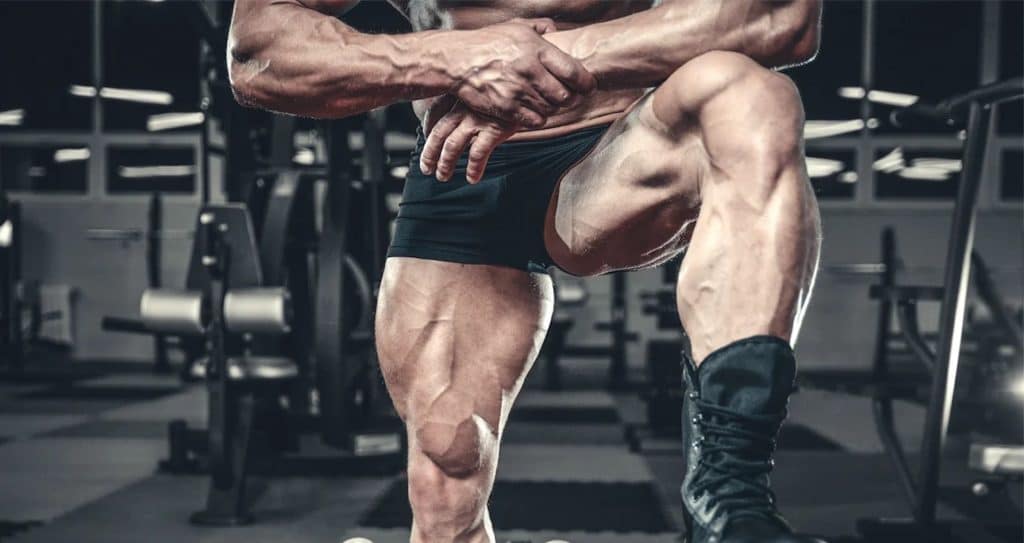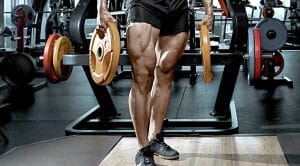Isolated Single-leg extensions provide valuable benefits for your leg muscles.
Leg day is meant to be brutal! But that doesn’t mean you get the green light to omit leg training. Not all leg days involve endless reps of the squat. The single-leg extensions are an isolated exercise that you can do without applying as much effort as squat would have you. If you’re feeling a little leg day burnout, you should try single-leg extensions.
This unilateral (single-limb) exercise works the quads; bulking those muscles means bigger-looking legs. You also don’t need to use too much weight for this routine; you are advised to avoid doing this since it’s a unilateral exercise, so you won’t be able to use as heavy weights as bilateral (multi-joint) exercises like squats.
So, the next time you’re thinking of skipping leg day because you’ve hit your limit for the week, how about doing single-leg extensions? In this guide, you’ll learn how to do this exercise, its benefits, and some variations you can add to get the best leg gains.
How to do a Single-Leg Extension
Single-leg extensions target your quadriceps, which are composed of four muscles (rectus femoris, vastus intermedius, vastus lateralis, and vastus medialis). But before you get on the machine and start pushing reps, you must know the proper technique. Here’s how to do a single-leg extension step by step:
- Adjust your leg extension machine so your knees are at the edge of the bench with your ankles just below the footrest when you sit.
- Sit firmly against the machine’s backrest and hold the handles on both sides.
- Brace your core, and starting with either side, push your shin against the machine roller to engage your quads.
- Extend your leg out and ensure that you squeeze your quads hard when your leg is fully extended. Don’t lock your leg out at the top to reduce the strain on your knee.
- Slowly drop your leg and raise it again for the desired reps.
- Switch legs and repeat.
Tip: Do this exercise slowly to ensure you activate your quads, not momentum. Pause and squeeze each rep when your legs extend for an entire quad contraction.
Single-leg Extension Benefits
Single-leg extensions build your quads and help with leg muscle hypertrophy. In addition, they help prevent muscular imbalances, especially if you’re doing other routines, mainly hamstring exercises. Below are the benefits that bodybuilders get from single-leg extensions.
Bigger Looking Thighs
Avoid the Johnny Bravo look by building your legs and thighs with single-leg extensions. This exercise encourages muscle hypertrophy by focusing on your quads.
Great Warmup Exercise
Single-leg extensions are a great way to get the blood flowing in your legs to prepare them for further exercises. For example, many bodybuilders do them before significant compound movements like squats to warm up their knee joints.
Easier to Do
When compared to other leg-building routines like deadlifts, squats, and leg presses, single-leg extensions don’t require as much rate of perceived exertion (RPE) — the intensity you exert during a lift. This is great for weeks when you feel maxed out but want to stimulate your quads.
Single-leg Extension Variations
Below are similar leg-building routines that also target your quads. Some of them are variations of the single-leg extension that you can do without using a leg extension machine.
Leg Extensions
Standard leg extensions build both your legs at the same time. It’s similar to single-leg extensions, but you can lift more weight with this routine.
Resistance Band Leg Extension
Resistance band leg extensions don’t use the leg extension machine. However, they still build your quads. There are many variations, and you can do it with a resistance band, cable machine, training bench, chair, or even a rail to support the resistance band in place for the movement.
Natural Leg Extensions
With natural leg extensions, you use your body weight to isolate and focus on your quads. One of the ways you can do this is by getting into a pushup position, elevating your feet using a sturdy box or bench, and then lowering your knees. This routine is excellent for higher reps.
Sissy Squats
Sissy squats are another quad-focused bodyweight exercise. In this routine, your legs travel over your toes, putting your quads under an extreme stretch.
Leg Anatomy
Your legs comprise many strong muscles that help you do big and small movements, such as standing or sprinting. They also help to stabilize your body and support your weight. Let’s investigate the muscles in the anterior and posterior portions of your leg muscles responsible for their function.
Anterior Leg Muscles
Your front leg muscles run from your hips to your knee. The main muscles here are the pectineus, quadriceps, and sartorius. You also have the medial thigh muscles and the posterior leg muscles, known as the hamstrings. Your anterior leg muscles help you extend your knees, flex your thighs, and rotate your legs.
- Pectineus: A side leg adductor muscle that helps bring your thigh to your body. It does this with other smaller muscles that help rotate your thigh.
- Quadriceps: Your quadriceps comprise four parts — the rectus femoris, vastus lateralis, vastus medialis, and vastus intermedius – that contract when extended.
- Sartorius: The longest muscle in your body and spans your knee and hip joints. It helps to flex and rotate your hip too.
Posterior Leg Muscles
Your back leg muscles are made up of your hamstrings and calves.
- Hamstrings: There are three hamstrings muscles — the semitendinosus, the bicep femoris, and the semimembranosus. They help with flexing the knee and extending the hip.
- Calf Muscles: Your main calf muscles are the gastrocnemius and the soleus. The tibialis posterior is a small calf muscle that helps stabilize the foot.
FAQs
How do you do a single-leg extension?
To do a single-leg extension, you need a leg extension machine. Sit with your back against the backrest, brace your core, and then extend with your leg and squeeze your quads.
Is it better to do single-leg extensions?
Single-leg extensions and double-leg extensions both work your quads. Neither is superior to the other. You can use more weight with bilateral leg extensions. And you have a better mind-muscle connection with single-leg extension.
How do you do single-leg extensions at home?
Many single-leg extension variations can be done at home without using machines. Some examples include natural leg extensions, resistance band extensions, and sissy squats.
Final Words
Training your leg muscles are essential for reaching your overall bodybuilding goal. And not all leg exercises need to be as brutal as squats and deadlifts. Single-leg extensions target your quads in particular and can help to maximize and boost your performance for activities such as sprinting. Plus, they’re a tremendous unilateral movement to correct muscular imbalances.
However, with this exercise, you must avoid straining your knee. Work with only weights that your leg can hold, and don’t lock your legs out when you extend your legs at the top of the range of motion to avoid knee injuries.
Follow us on Instagram, Facebook, and Twitter for more exercise guides!









